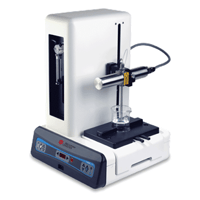Light Obscuration allows for quick and easy particle counting and sizing in seconds. It is also a fully automated method that allows for minimal human error. Furthermore, it is one of the most cost effective methods, because other than a dilute sample, no other chemicals or consumables are needed for analysis.
Light obscuration is an analytical technique in which the individual particles in a liquid suspension are placed in-between a laser light source and a detector. The laser light source is used to illuminate the individual particles resulting in a shadow or a blockage of light. This shadow or blockage is often called “obscuration”, which is how this particular analytical technique was granted its name. Light obscuration or the reduction of light intensity is measured by the detector. The detector will then process the measured signal and use it to display a comprehensive calibration curve. This curve is then read to quantify particles and determine their size.
- High resolution particle sizing and counting
- Suitable for particles > .5 µm
- No need for extra chemicals or consumables
- Repeatable and reproducible results among instruments
- Suitable for USP 788
- Quick easy results that are comprehensible







